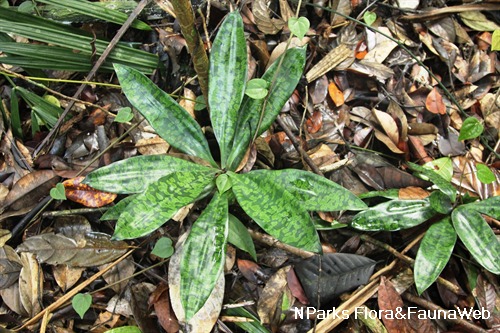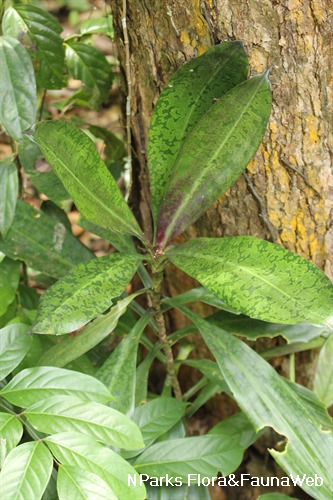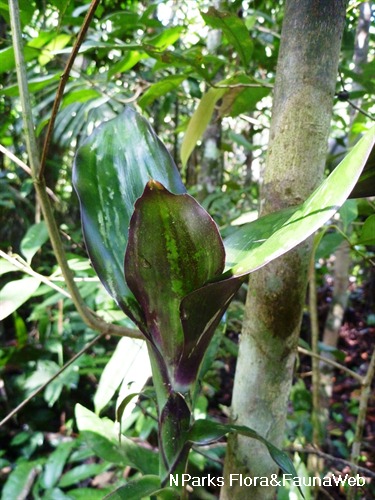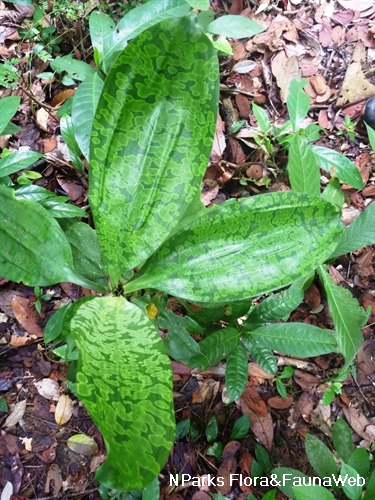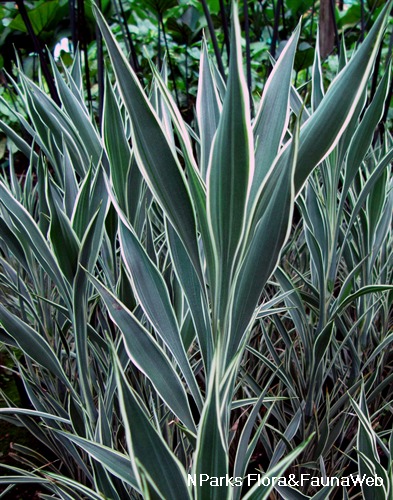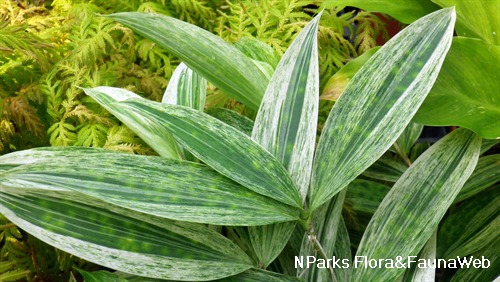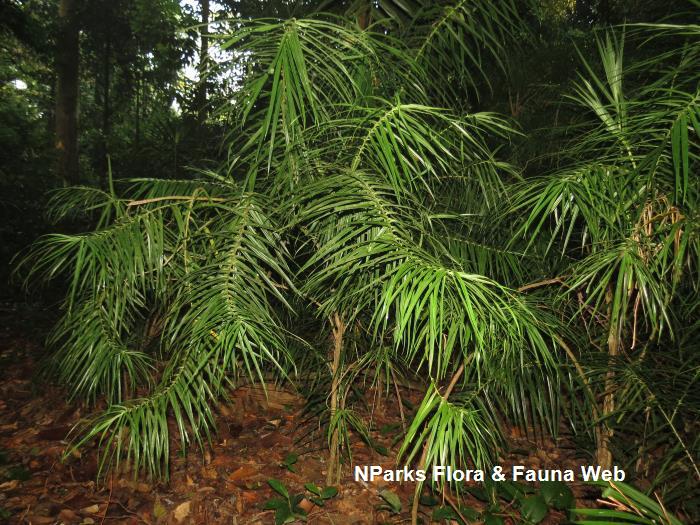
Back
Dracaena cantleyi Baker
| Family Name: | Asparagaceae |
| Synonyms: | Dracaena aurantiaca (Baker) Wall. ex Hook.f., Dracaena marmorata Baker, Dracaena spicata Baker var. aurantiaca, Pleomele aurantiaca (Baker) N.E.Br., Pleomele cantleyi (Baker) N.E.Br., Pleomele marmorata (Baker) N.E.Br. |
Name
Classifications and Characteristics
| Plant Division | Angiosperms (Flowering Seed Plants) (Monocotyledon) |
|---|---|
| Plant Growth Form | Tree (Shrubby (1m-5m)) |
| Lifespan (in Singapore) | Perennial |
| Mode of Nutrition | Autotrophic |
Biogeography
| Native Distribution | Peninsular Malaysia, Singapore, and Borneo. |
|---|---|
| Native Habitat | Terrestrial (Primary Rainforest, Freshwater Swamp Forest) |
| Preferred Climate Zone | Tropical |
| Local Conservation Status | Native to Singapore (Endangered (EN)) |
Description and Ethnobotany
| Growth Form | It is a tall, little or unbranched tree, up to 4 m tall. It can be easily identified from the purple or purplish-green leaves with light green circular patches. |
|---|---|
| Foliage | Its spirally arranged, stalked, leaves have leathery leaf blades that are oval to lance-shaped or egg-shaped, green with a purplish tinge and light green circular patches, and 30–90 by 10–13 cm. |
| Flowers | Its flowers are 2.5 cm long, purple outside, white inside, and arranged in loose clusters of 3–4. |
| Fruit | Its fruits are about 2.5 cm and orange when ripe. |
| Habitat | It grows in damp to wet open areas of forest edges and freshwater swamps. It occurs locally in Mandai Forest and Nee Soon Swamp Forest. |
| Associated Fauna | Its flowers are insect-pollinated while its fruits and seeds are probably eaten and dispersed by birds or mammals. |
| Etymology | Greek dracaena, a dragon, referring to the bright red dried red resin, called dragon’s blood, obtained from various species including those of Dracaena; cantleyi, commemorating Nathaniel Cantley, the former curator of the Singapore Botanic Gardens (1880–1886) |
Landscaping Features
| Landscaping | It may be suitable for parks. |
|---|---|
| Desirable Plant Features | Ornamental Foliage |
| Landscape Uses | General, Parks & Gardens |
Fauna, Pollination and Dispersal
| Pollination Method(s) | Biotic (Fauna) |
|---|---|
| Seed or Spore Dispersal | Biotic (Fauna) |
Plant Care and Propagation
| Light Preference | Semi-Shade |
|---|---|
| Water Preference | Moderate Water |
| Plant Growth Rate | Moderate |
| Rootzone Tolerance | Moist Soils |
| Propagation Method | Seed, Stem Cutting (Semi-Hardwood) |
Foliar
| Foliage Retention | Evergreen |
|---|---|
| Mature Foliage Colour(s) | Green, Purple |
| Mature Foliage Texture(s) | Leathery |
| Prominent Young Flush Colour(s) | Green, Purple |
| Young Flush Texture(s) | Leathery |
| Foliar Type | Simple / Unifoliate |
| Foliar Arrangement Along Stem | Alternate |
| Foliar Attachment to Stem | Petiolate |
| Foliar Shape(s) | Non-Palm Foliage (Lanceolate, Elliptical) |
| Foliar Margin | Entire |
| Foliar Apex - Tip | Acute |
| Foliar Base | Attenuate |
Floral (Angiosperm)
| Flower Colour(s) | Purple, White |
|---|---|
| Flower Grouping | Cluster / Inflorescence |
| Flower Location | Terminal |
| Inflorescence Type | Panicle |
Fruit, Seed and Spore
| Mature Fruit Colour(s) | Orange |
|---|---|
| Fruit Classification | Simple Fruit |
| Fruit Type | Fleshy Fruit , Non-Accessory Fruit |
Image Repository
Others
| Master ID | 31182 |
|---|---|
| Species ID | 5576 |
| Flora Disclaimer | The information in this website has been compiled from reliable sources, such as reference works on medicinal plants. It is not a substitute for medical advice or treatment and NParks does not purport to provide any medical advice. Readers should always consult his/her physician before using or consuming a plant for medicinal purposes. |


